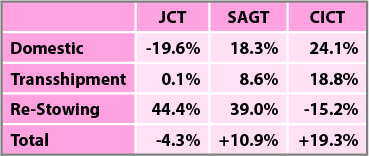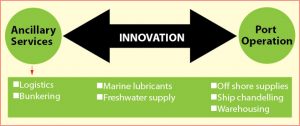Originally appeared on The Morning
By Dhananath Fernando
When I was a university student in my final year, I did an internship at one of the leading garment companies in Sri Lanka. My internship stipend was Rs. 5,500 per month, and I worked in Nittambuwa.
On the weekly payday, it was a tradition that I would bring a small, affordable treat home. Of course, in those days the value of Rs. 5,500 and the purchasing power of the rupee was better than it is today. When my bus reached Pettah station (my interchange for the next bus to my home in Moratuwa), I would walk through the local market. What I could afford to buy from my stipend were fruits like apples, oranges, and grapes that were sold on the market sidewalks, and I would purchase a few of each variety.
I recalled those days when I heard that the Government would be imposing licensing requirements for the import of 367 products, including apples and oranges. It occurred to me that many of the small traders who used to sell me those fruits would probably go out of business. Furthermore, the consumers who enjoyed affordable sources of fruit may lose access too.
There appears to be a widespread misconception that fruits like apples and oranges are only consumed by the wealthy elite. If they were only consumed by wealthy people, they of course would not be sold on the Pettah pavements and at central bus stands in Colombo and across the country.
The fundamental logic that is important to understand is that we cannot categorise any product as ‘essential’ or ‘non-essential’ in the first place. Different products are essential to different people based on a multitude of factors.
A particular type of fruit like apples may not be essential to me, as I prefer to eat mangoes instead of apples. But from the perspective of an entrepreneur who was making apple juice or apple vinegar in Sri Lanka, apples cannot be substituted with mangoes. It is very likely that they will go out of business.
Licensing process
According to the new regulations, the importers of 367 product categories have to obtain a licence for importation. Imposing such a licensing process will undoubtedly lead to corruption. This move will ultimately only allow people in well-connected elite circles with contacts amongst Customs officers and politicians to obtain the import licences. The small-scale importer will be hit the hardest.
All big industries that require a licence have been taken over by politically-connected individuals. For example, private buses require a licence or a route permit. As the route permit is more expensive than the vehicle itself, buses tend to be poorly maintained, which puts passengers and other road users at risk.
The need for a licence to sell liquor is another example: most of the liquor licences of any given electorate tend to be owned by ruling and Opposition MPs, their family members, or allies.
Similarly, licences for Ceylon Petroleum Corporation-owned filling stations and State-owned LP gas distribution (and many other industries that require licences) have been completely overtaken by politically-connected individuals and most areas have minimal competition as a result.
Even obtaining the licence or approval that is required for basic house construction is a very cumbersome process and is greatly influenced by bribery and corruption.
Furthermore, the prices of many of the newly-affected products will go up. The few people who have the licence will have controlling power over the pricing and will effectively monopolise the industry.
Imports are not the problem
To think that imports are the cause of the present USD shortage is a completely inaccurate diagnosis of Sri Lanka’s economic situation.
As the Advocata Institute has explained many times, higher rates of imports have been caused by a reckless monetary policy, including quantitative easing and low-interest rates. Our imports have been declining as a percentage of GDP for the last 30 years, as have our exports. Therefore, thinking that imports are the fundamental problem is a complete misconception.
However, the Government and the Central Bank have recently been taking measures which are steps in the right direction. Increasing interest rates and floating the currency are appropriate in the current context, given the balance of payment crisis the country is undergoing.
Ideally, interest rates have to be low and the currency has to be strong, but both can happen with time by allowing market forces to work. It is clear that the value of the currency cannot be maintained by forceful intervention.
However, currency depreciation and higher interest rates will affect citizens in multiple ways. Depreciating the currency will cause inflation rates, which is about 14.2% (CPI, January 2022), and prices of most essentials and non-essentials to spike dramatically.
Increasing interest rates will encourage people to save more than they spend, so the cost of capital will be high and the economy will be slowed down. Hence, growth will be low. It’s a choice between two equally-difficult options.
Our policymakers should understand that imports are not the problem. The real problem is that we haven’t carried out any reforms to improve the productivity and efficiency of the economy. Until the Government identifies the existence of a problem and takes the necessary actions to rectify it, we will not be able to overcome this crisis.
The opinions expressed are the author’s own views. They may not necessarily reflect the views of the Advocata Institute or anyone affiliated with the institute.



